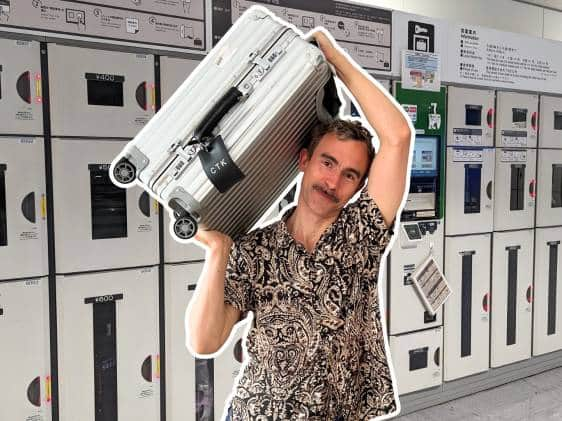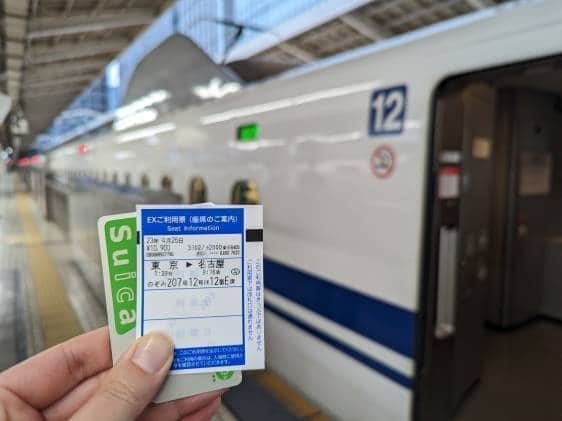The trusty ‘shopping bicycle’ is ubiquitous in Japan. It’s used for the daily commute to school and work, carrying kids across town, lugging groceries, and taking in the local landscape. You might be familiar with its nickname, mama-chari. Here’s what you need to know about the 2-wheeler; how shopping bicycles came about, as well as handy tips for purchasing, riding and parking.
What is a mama-chari? A brief overview
Mama-chari or ‘mom’s bike’ is essentially an everyday utility bicycle, characterized by a comfortably low-positioned frame (usually double looped L or U shape), easy-hold handles, a kickstand stopper, and a basket. With the right fitted seating, it can also accommodate 1 to 2 children. These days, the bicycle usually comes with an in-built lock and key, and friction-powered light.
Why is it called a mama-chari though? There’s a bit to unpack behind the friendly yet stereotypical colloquialism.
Although bicycles were introduced to Japan in the late Edo period (1603–1868), it wasn’t socially acceptable for women to ride bicycles until nearly a century later. Since bicycles were intended for men, they used to be large, heavy, and relatively expensive.

During the Shōwa period (1926–1989), in the 1950s, bicycle manufacturers needed to pivot as the demand for traditional bicycles dwindled. Finally, it was time for a bicycle to be designed for the needs of women.
The light frame and low center of gravity of shopping bicycles made it easy for women to hop on and off, as well as ride with stability, even with groceries or children piled onto the front or back. So, the first mama-chari models were really a means to empower women in their daily lives.
As the convenient and practical shopping bicycle gained popularity across Japan, it has also evolved from being just a mama-chari to becoming the common mode of transport for many Japanese. Today, the shopping bicycle is just as much for mothers as it is for fathers, youngsters, and elderly, in Japan and even overseas.
Types and Costs
When looking for shopping bicycles, you’ll probably see them categorized as ‘city bicycles’.
We’ve got a list of some of the best shops for buying a new bicycle in Tokyo, as well as great spots for reconditioned bicycles. If you’re here for a short visit or only need the occasional ride, you can also rent bicycles.
Tips for buying:
- Since you can’t take bicycles on the train (unless they’re foldable) you’ll want to consider getting one near where you live.
- Make sure to check out the upcycled, second-hand section available in most stores.
- At a relatively low cost (determined by which bike you buy), membership options at bicycle stores often include registration, warranty, and free servicing.
- Spruce up your ride with a rear-end basket and a cover to keep your bike rust-free.

Classic shopping bicycle
- Simple, reliable, and everything you need for your city ride.
- Cost range (new): ¥10,000–¥30,000 (expect ¥40,000–¥60,000 for manual child-seater bicycles)
- Example: Shopping bicycles by Cycle Base Asahi
Electric shopping bicycles
- A notch up from the classic shopping bicycle. The extra yen might be worth it if you’ve got a lot of up-hill or kids to shuttle across town.
- Cost range (new): ¥80,000–¥165,000 (prices generally increase with battery size and number of passenger seats)
- Examples:

If you’re after something more sporty or suited to longer distances, you can check out road bikes or cross bikes, too. And don’t forget foldable bicycles; they’re handy if your usual route requires you to take your bike on the train.
Know the rules
As they say, rules are rules, and for good reason. Although on the decline, there were still 67,673 bicycle-related incidents in Japan (according to a 2019 survey by the National Police Agency).
So while you might notice that not everyone will abide by them, it’s important to be aware of the rules and do our best to keep ourselves and others safe. Here are a few special mentions and tips:
- Keep left on the road: Considering the ‘road’ is often a narrow lane shared with oncoming traffic, cyclists and pedestrians, this can be easier said than done. In reality, you’ll find locals riding on the pavement, but beware: disturbing pedestrians can give you up to ¥20,000 of grief.
- Wear a helmet: Although recommended for all, it’s only compulsory for children under 13. Many Japanese don’t wear helmets, especially when using shopping bicycles for short distances, but don’t let that sway the common sense out of you!
- No umbrella-holding: For those days where you don’t want to get soaked while cycling… use a rain poncho instead.
- No two-person riding: Unless your best mate is a child under six, don’t put them in the passenger seat.
- Don’t drink and cycle: A definite no-no, with the punitive measure being up to five years in prison or up to ¥1,000,000 in fines. Yikes.
- 自転車 jitensha bicycle
- 自転車置き場 jitensha okiba bicycle parking space
- 駐輪場 chūrinjō, bicycle parking, in comparison to 駐車場 chuusha, car park
- 駐輪禁止 chūrin kinshi bicycle parking not permitted
- 無料 muryō free
- 精算機 seisanki ticket machine
- Paid parks can be between ¥100 to ¥200, give or take every few hours.
- Take care to avoid the domino effect! This can and does happen when one parked bicycle goes down taking down all its neighbors with it. (I may have been the sorry culprit of such an incident…)
- If you’ve parked at a bike rack, it will only be released via the ticket machine and/or upon payment. So make sure you select the right number for your parking spot, otherwise you’ll end up doing a great favor for your neighbor.
- Look for signs to confirm if you need to pay or not. If you’re using a service e.g. visiting a café or game center, there will generally be free parking, or they might offer a discount for your paid parking.

You can read more on bike rules at this page on the Japanese Government website (in Japanese).
Park like a pro
Space always proves to be a challenge in Tokyo, but there are a range of solutions when it comes to parking your bike. Bicycle parking can be free or paid, outside or covered, multi-storied or underground. Generally located where you need them; look out near the train station, outside the supermarket, or at the rear of buildings.

You can also find bicycle parking near you using Churin or Navitime (in Japanese). For innovative solutions, you can check out robotic underground bicycle storage such as those by Eco-Cycle and Cycle Tree.
Some important parking terms to look out for:

Tips for parking:

Get insured
At under ¥5,000 for the year, insurance can be a worthwhile investment, to protect yourself from being sued by the person you run over on your grocery-laden bike.
Between insurance marketplace websites Hoken Ichiba and Hoken Kakaku.com, here are a few of the most popular options:
| Provider | Price Annual/Monthly | Total private compensation | Death disability benefit/ premium | Hospital benefit/ premium | Surgery benefit/ premium | Other compensation |
|---|---|---|---|---|---|---|
| eCycle by Tokio Marine Group | ¥2,940 / ¥260 | Unlimited | ¥1,000,000 | None | None | Court negotiation service |
| Cycle Assist by Rakuten | ¥3,000 / NA | ¥100,000,000 | ¥2,500,000 | ¥2,500 | ¥12,500–¥25,000 | Court negotiation service |
| Bycle by Au | ¥3,790 / ¥340 | ¥200,000,000 | ¥2,500,000 | ¥4,000 | ¥20,000–¥40,000 | Court negotiation service and road service |
| @Cycle by Mitsui Sumitomo Insurance | ¥3,090 / NA | ¥300,000,000 | ¥10,000,000 | ¥6,000 | ¥30,000–¥60,000 | Court negotiation service |
There are also couples and family insurance plans. Interestingly, while bike insurance isn’t yet compulsory in Tokyo, some prefectures and towns have made the move to mandate it, including Saitama, Kyoto, Osaka, Hyogo and Kagoshima.
Whether the shopping bicycle has won your heart or not, you might have a new appreciation for this staple of transport in Japan. While you’re at it, make sure to check out some awesome routes for exploring Tokyo by bike.































